EVOLUTION OF THE WALE-LIMB MICROSCOPES MADE BY SWIFT
MAKER: JAMES SWIFT & SON.
c. 1881 to mid-20th Century.
INTRODUCTION:
James Powell Swift set up shop for himself in 1854 and was joined by his son Mansell James Swift in 1877. The company retained the name James Swift & Son into the third quarter of the 20th century.
In 1879 the American Microscope maker George Wale first published his design for inclination making use of radial grooves in the limb. This design maintained the center of gravity during inclination and also allowed one to vary the degree of obliquity of illumination. This design was swiftly copied by makers both in the U.S.A. and England. Swift was one of its strongest proponents and made Wale limb microscopes of various types for many years. His first model was called the Improved Wales Microscope No 313
and was of a small student size, similar to the Wale original and was reported in the JRMS of 1881. Not long after that Swift started to offer Wale-limb microscopes of increasing sophistication. This culminated in the Paragon
model of the 1891-1910 era, and the later Symposium
models made well into the 20th Century. This web page is a chronological review of most of the various Swift Wale Limb microscopes.
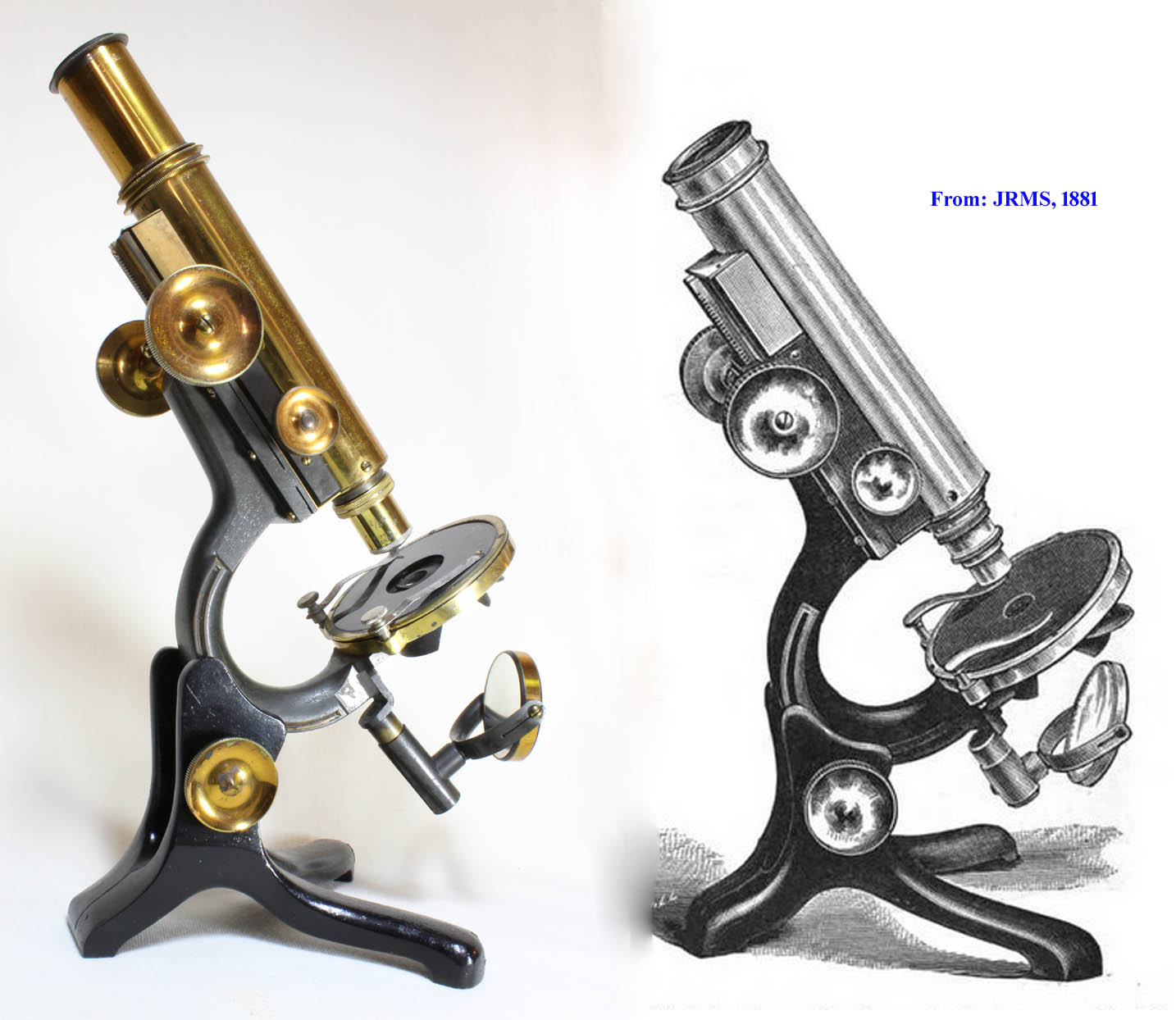
The earliest model was described in the JRMS of 1881. It had a round stage and a calotte diaphragm attached to the bottom of the stage. It featured the newly developed Climax
fine adjustment, operated by a knob from the side of the limb, for the first time.
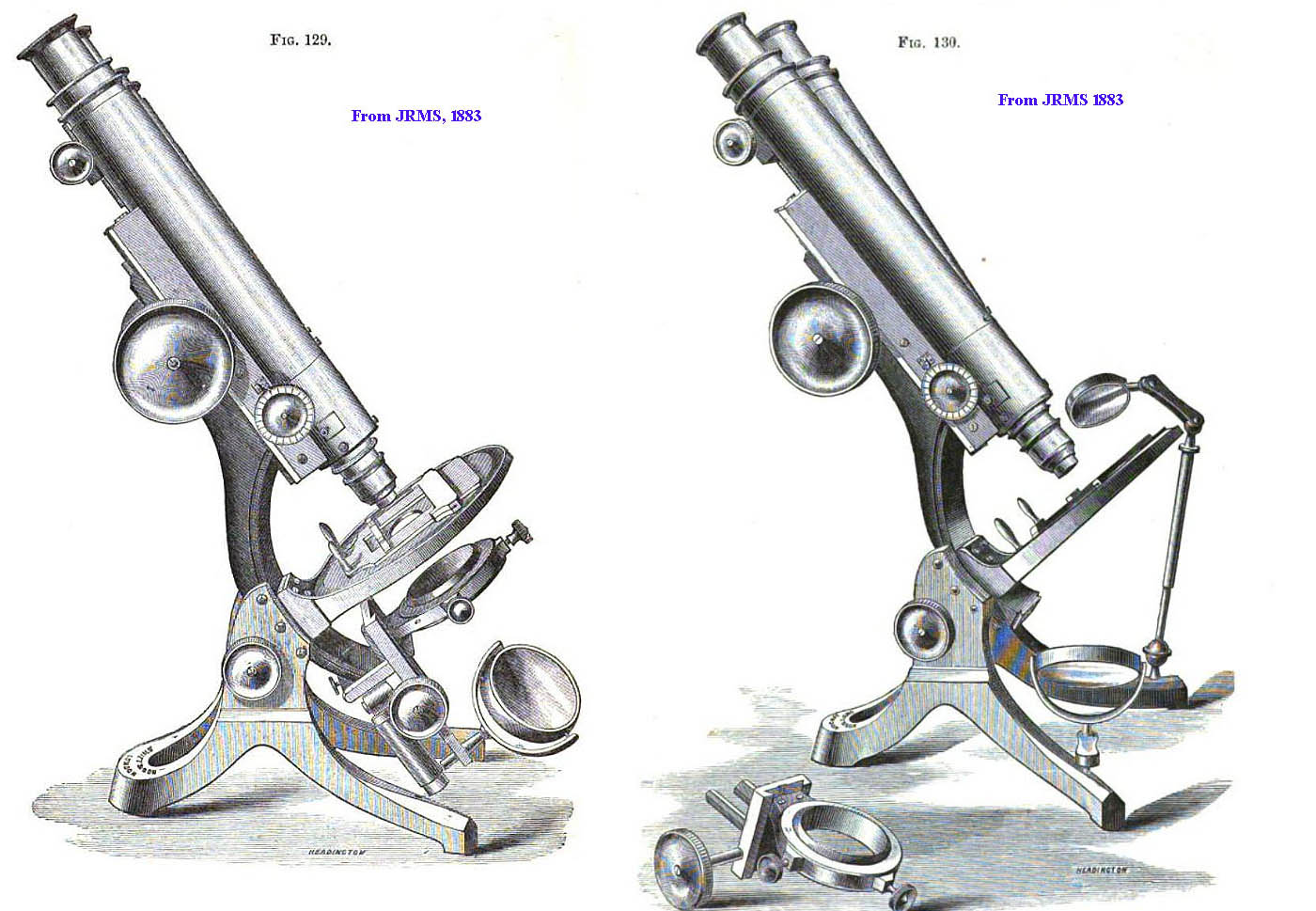
In 1883 a new version of the Swift Wale limb microscope referred to as the Radial and Inclining
Microscope was figured and reported in the JRMS, pp704-706, and then in the November issue of the English Mechanic and World of Science. This version had a removeable substage, including the tailpiece for the mirror. It had holes on the front of each side of the foot for a bullseye condenser or the mirror; having these not move during inclination provided a way to take advantage of varying degrees of obliquity of illumination as the inclination was changed. The mirror could alternatively attach to the tail piece. This was the first Wale limb illustration showing 3 screws in the uprights which rode in the inclination groove. It had a glide-stage in which the slide sat on a holder which could be manually pushed around the stage.
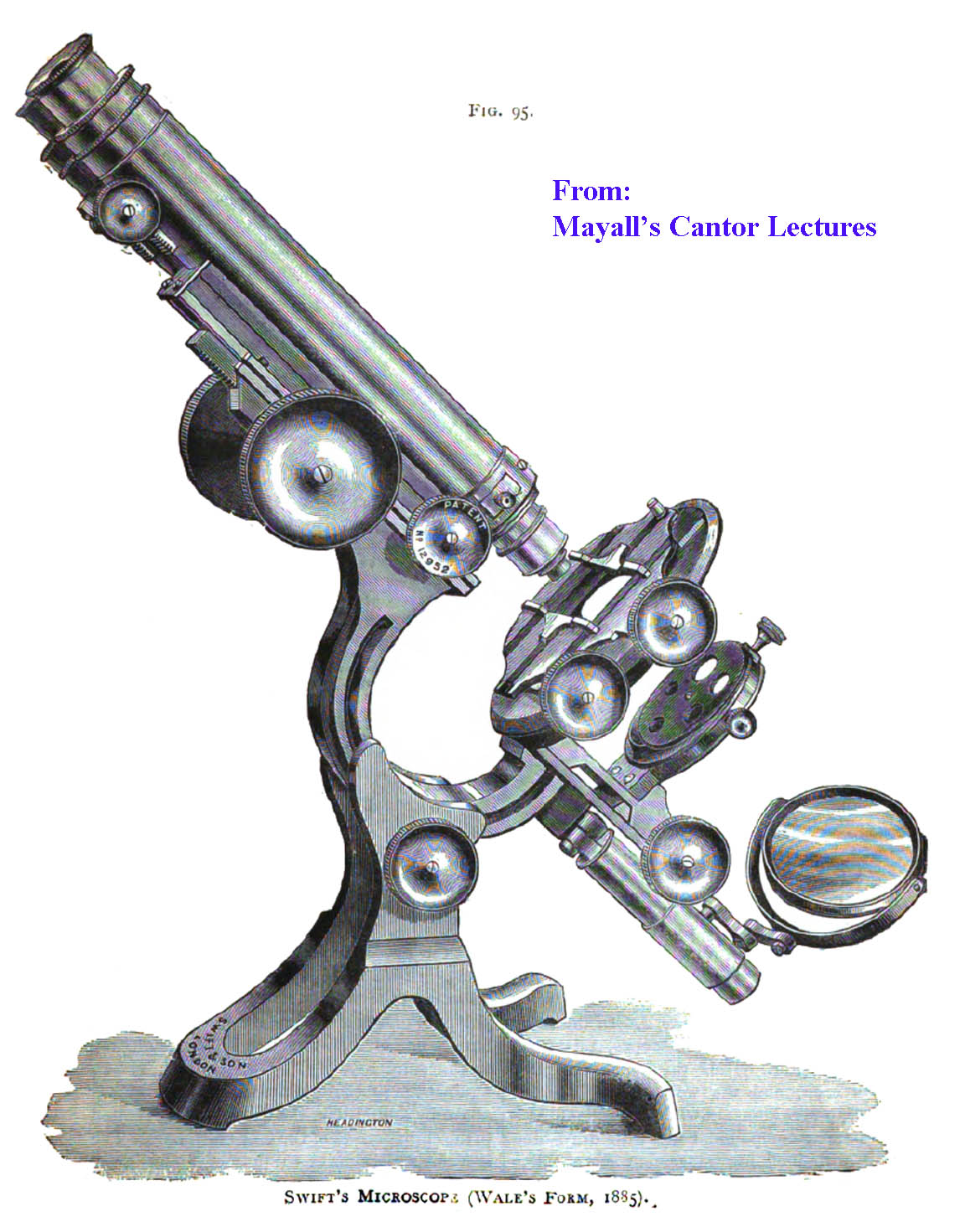
Soon after that, the Paragon, a model with many features similar to the 1883 Radial, but larger, was produced, starting no later than 1885. It was illustrated in Mayall's Cantor lectures and dated there to 1885. The engraving pictured in Mayall's Lectures on page 87, continued to be used to illustrate the Paragon in the Swift catalogs in all cases where it was found thereafter, despite any changes that might have taken place in its design. This was a common practice as engravings were expensive and time-consuming to produce and often did not reflect the latest model.
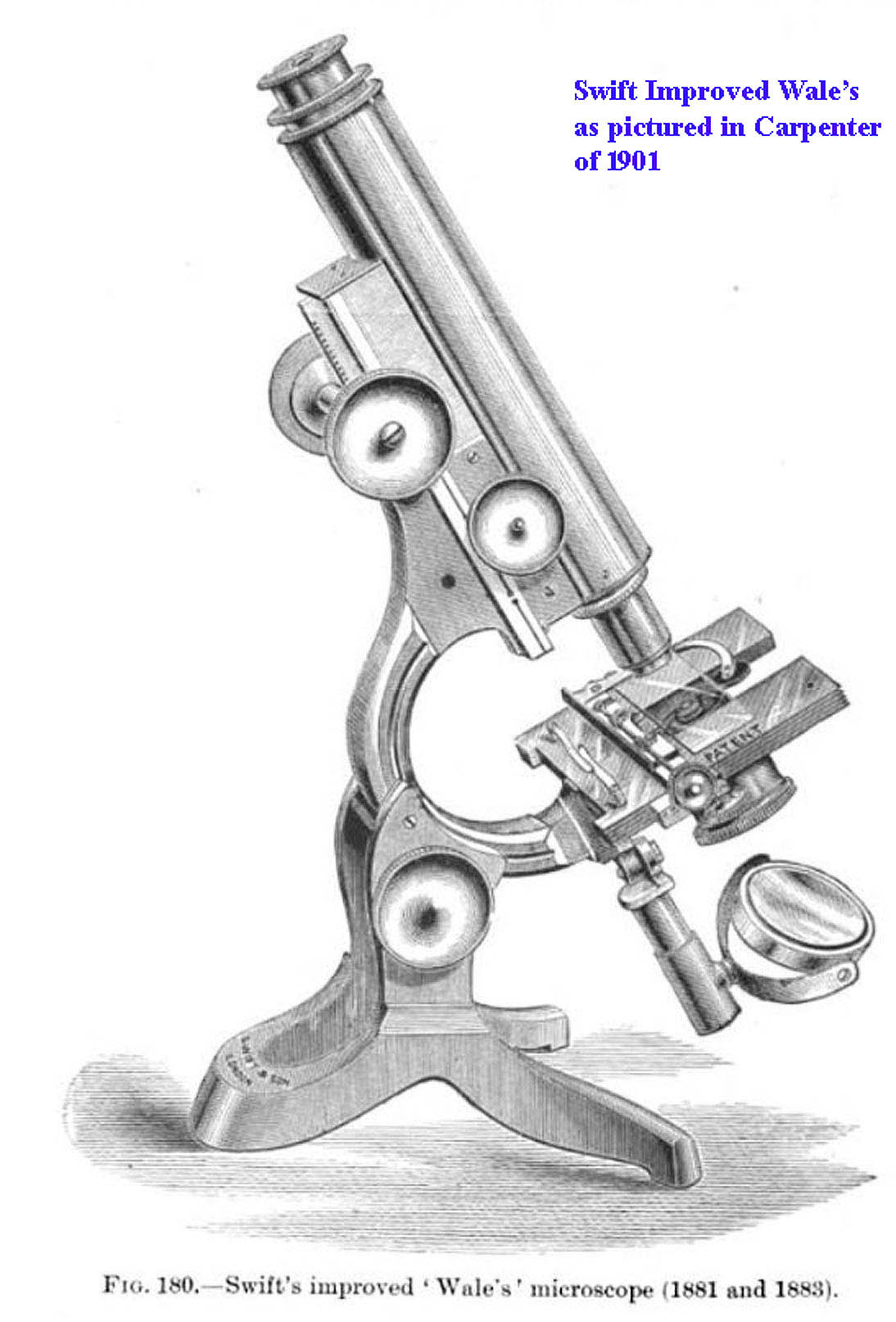
In the 1901 edition of Carpenter, the Improved Wale's microscope
dated to 1881 and 1883
shows a square U-shaped
stage with a front cutout and an attached Travis mechanical stage.
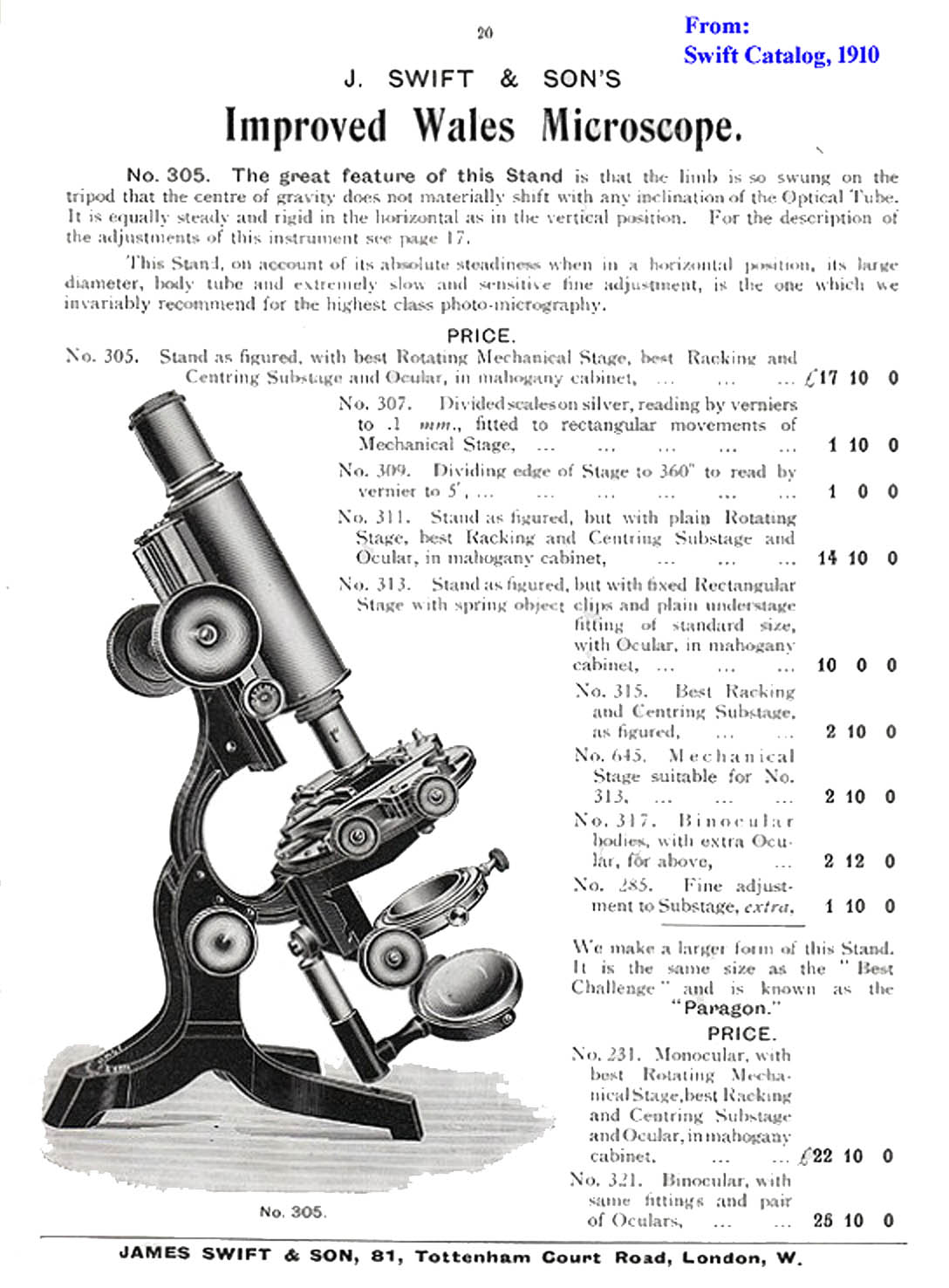
The Swift 1910 catalog pictured what it called the Improved Wales Model
. This image shows three screws guiding the limb and that catalog entry mentions the Paragon as a larger model also available at the time. The Paragon was no longer listed in the 1913 Swift catalog.
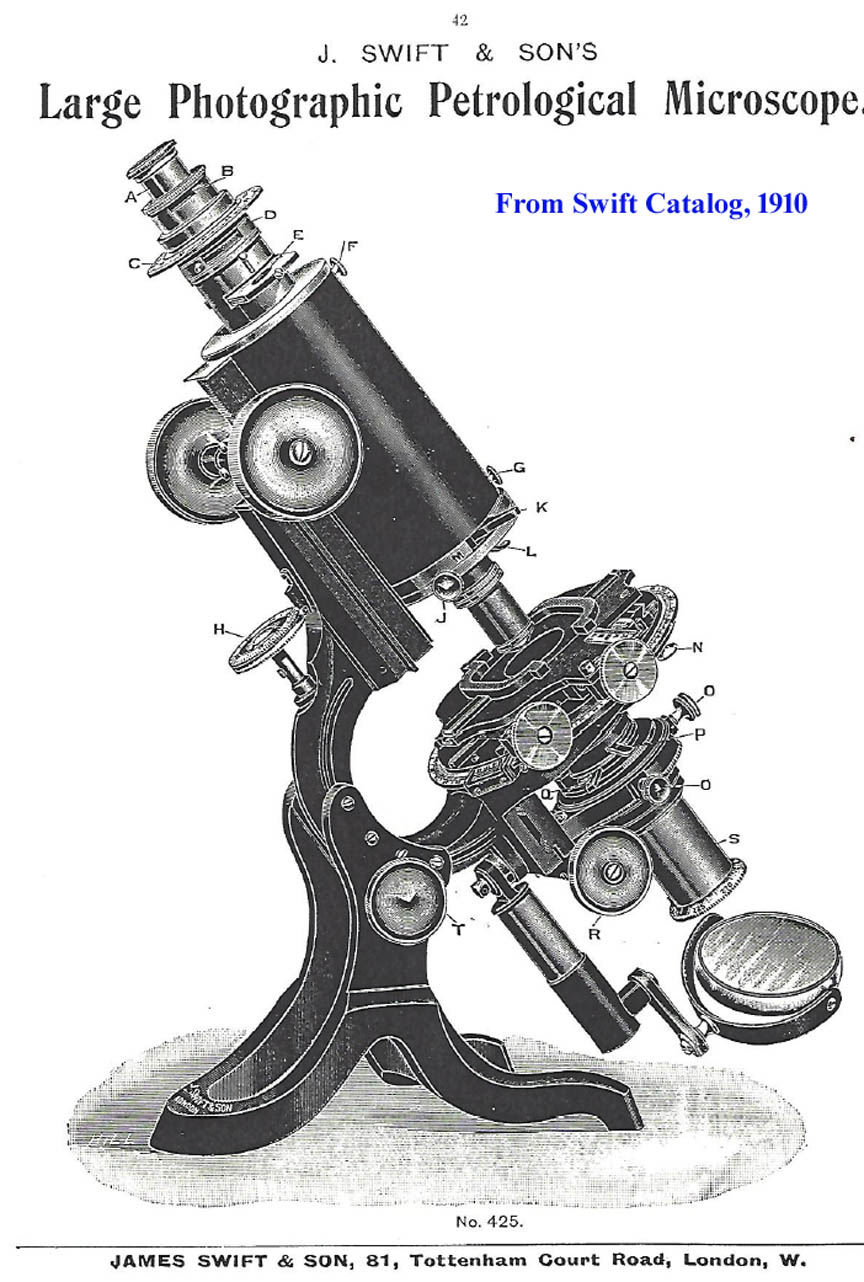
The Swift Large Photographic Petrological
microscope was another Wale limb instrument found in the 1910 catalog and into the 1920s.
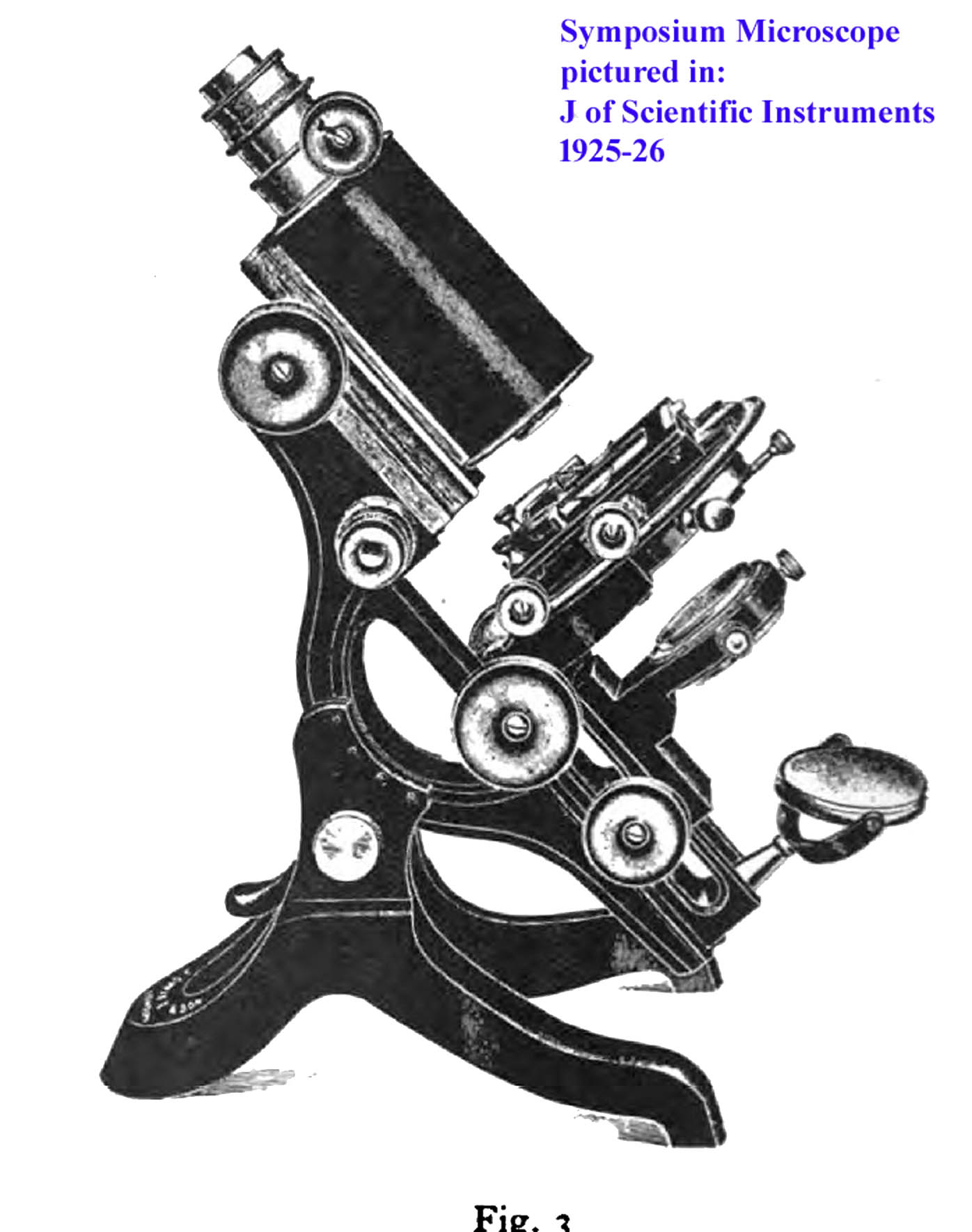
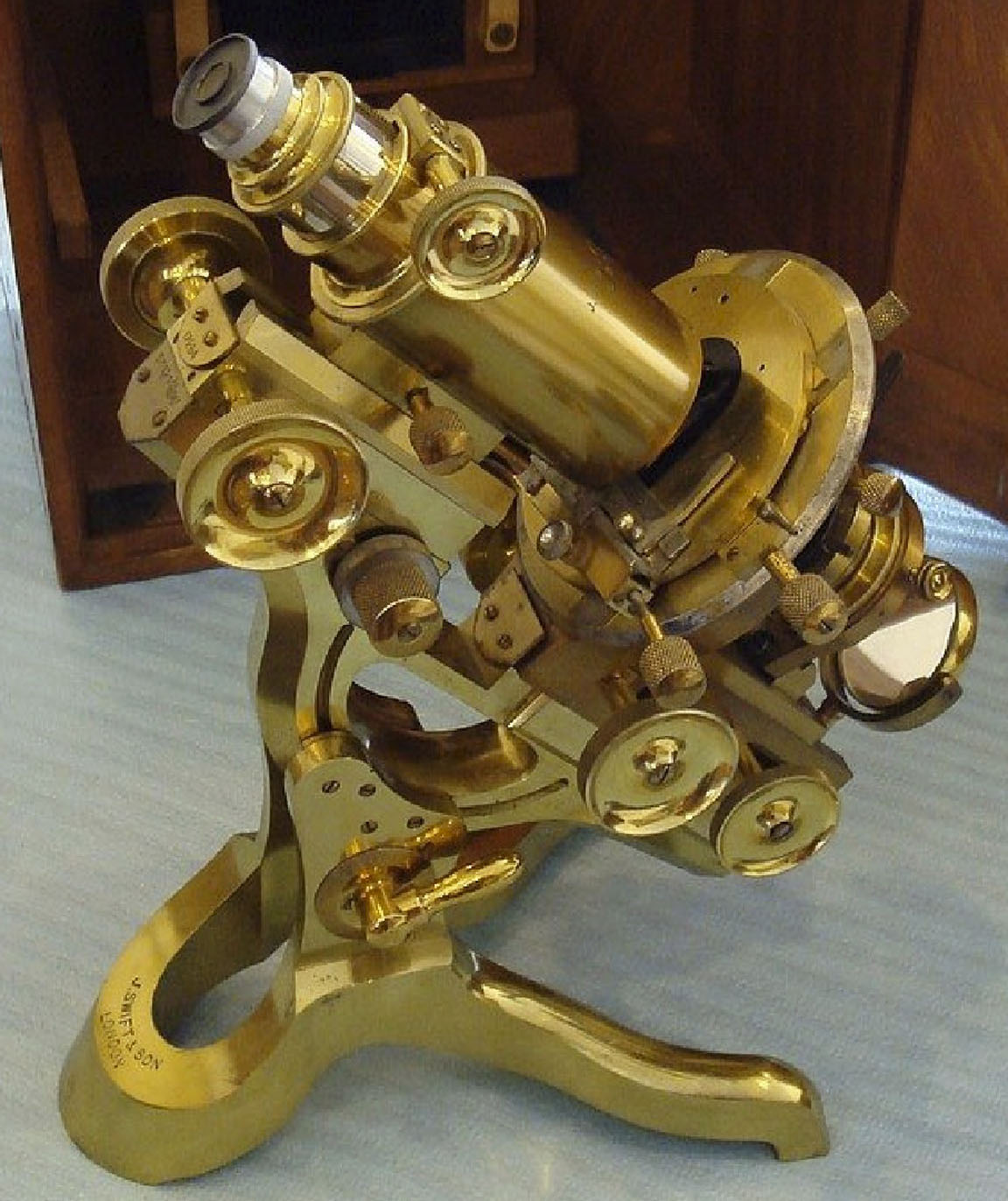
The Swift Symposium
microscope was first described in 1920 by Powell Swift in:
Spiers,F.S. THE MICROSCOPE ITS DESIGN, CONSTRUCTION, AND APPLICATIONS, A SYMPOSIUM AND GENERAL DISCUSSION BY MANY AUTHORITIES.
It features the quick change system for condensers similar to the one for objectives named after Sloan. Apparently it was initially made in lacquered brass but soon in the black finish that was becoming popular in the second decade of the 20th Century. Its design apparently changed as time went on but it always featured a Wale limb inclination.
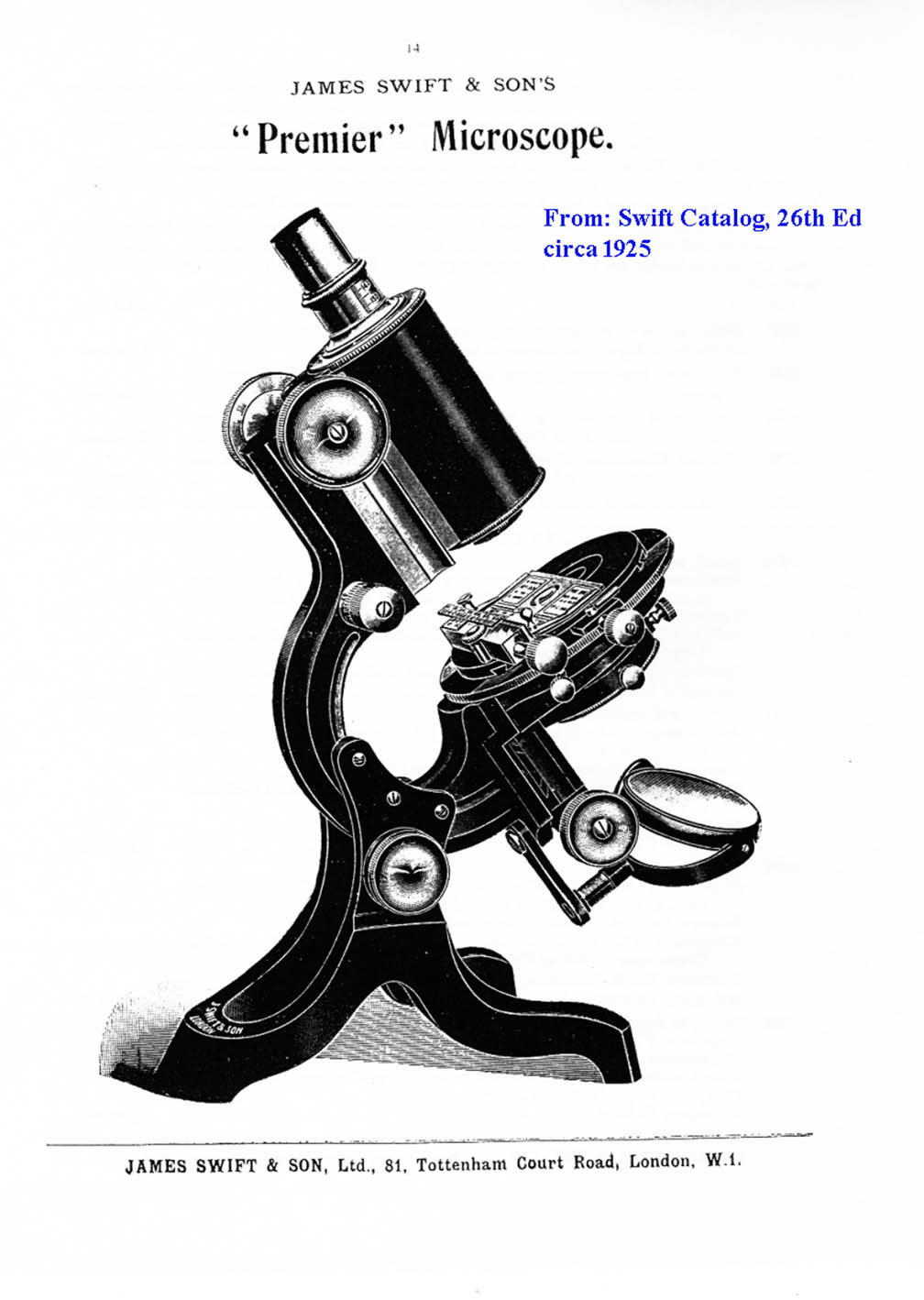
At about the same time the Premier
model also featured a Wale Limb.
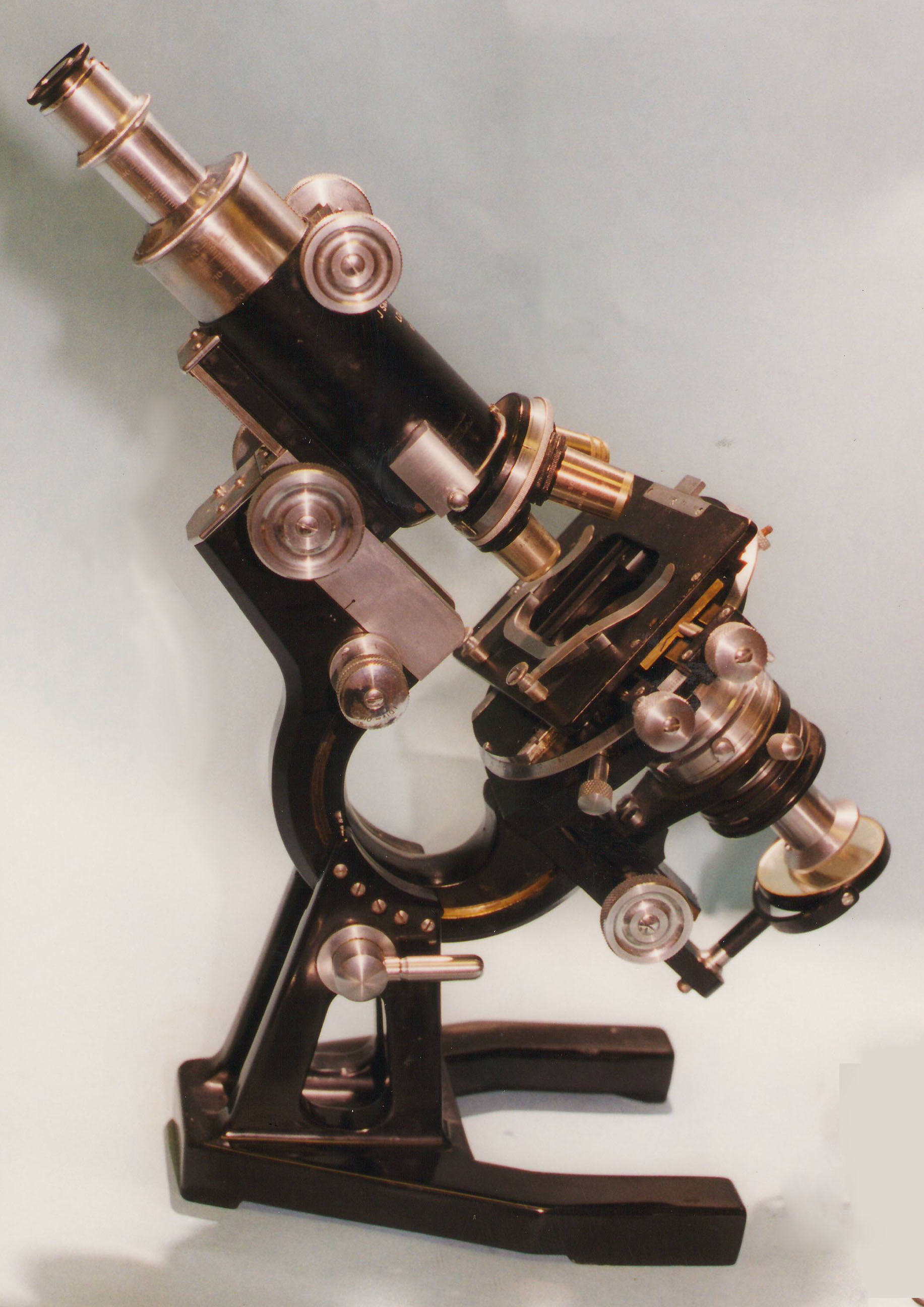
This is a later version of a Swift petrographic Symposium Microscope with a Wale Limb likely from about 1930 or later. It is built on the Symposium form. It also has the Sloan-type quick change system for condensers.









